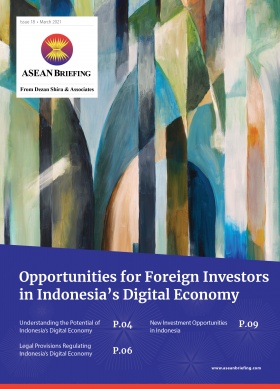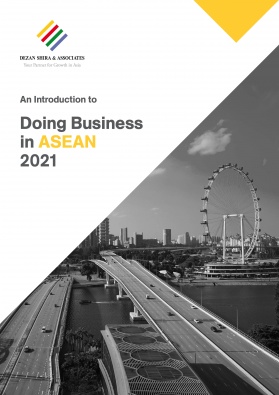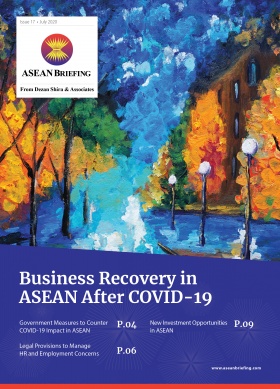Thailand’s Sandbox Reopening: Implications for Tourism in Southeast Asia
Since July 1, 2021, Thailand has allowed foreign travelers to enter the island of Phuket for the first time in over 15 months due to COVID-19 travel restrictions via the Phuket Sandbox program.
The Thai government is using Phuket, the country’s most popular resort island, as a pilot project to experiment with international tourism amid the pandemic. Domestic and international travelers can only enter the island if they have proof of vaccination and a negative COVID-19 test.
Like many other Southeast Asian countries, tourism is one of Thailand’s biggest industries, accounting for some 20 percent of GDP. In 2019, Thailand earned 3 trillion baht (US$90 billion) from domestic and international tourism, but the pandemic caused revenues to crash to 800 billion baht (US$24 billion) in 2020.
The success or failure of Phuket’s so-called ‘Sandbox’ reopening will have implications for the recovery of Thailand’s tourism industry, and that of Southeast Asia more broadly.
The pandemic challenge to Thailand’s tourism industry
Lockdown measures, travel restrictions, and COVID-19 risks have battered Thailand’s tourism industry since the pandemic struck the country in early 2020.
In 2019, before the pandemic, Phuket had over 10.5 million visitors, bringing in US$13 billion in revenue – almost 90 percent of the island’s GDP.
In the first five months of 2020, Phuket had over 3 million visitors, 2 million of which were foreign visitors, despite the government imposing travel restrictions in March 2020. In contrast, in the first five months of 2021, Phuket saw less than half a million visitors, and only around 5,000 were foreigners.
With the introduction of the Sandbox project, authorities hope to begin Thailand’s reopening to international tourists. Thailand’s Minister of Tourism, Phiphat Ratchakitprakam, estimated that 100,000 international tourists would arrive in Phuket from July through September 2021, which could generate 9 billion baht (US$90 million) in revenue.These projections, however, may prove optimistic. Thailand’s National Economic and Social Development Council expects only 150,000 foreign tourists for the whole year, compared to 40 million in 2019, due in large part to the surging delta variant.
The results of the Sandbox project, control of the delta variant, and Thailand’s vaccination drive will determine whether Thailand’s tourism industry ends the year on an optimistic note or continues to suffer from the pandemic.
How the Phuket Sandbox pilot project works
Currently, all overseas arrivals to Thailand must quarantine for 14 days at an Alternative State Quarantine facility, even if they are fully vaccinated. With the launch of the Phuket Sandbox pilot project, however, travelers have been able to land in Phuket directly from abroad without quarantining, but they must be vaccinated.
As of July 12, 2021, Phuket has accepted travelers from 69 countries and territories, including Australia, Canada, China, France, Germany, Japan, New Zealand, Singapore, Spain, and the US. Travelers must have stayed in one of these countries or territories for at least 21 days before their arrival, except for Thai nationals and returning expats. The complete list of eligible countries and territories can be found here.
Travelers must present a number of documents to complete a Certificate of Entry application online and receive a certificate. These are:
- Medical certificate showing negative RT-PCR COVID-19 result within 72 hours before travel;
- Medical insurance for COVID-19 healthcare and treatment worth at least US$100,000;
- Proof of payment for an approved hotel (SHA+ accredited) for at least 14 nights and associated RT-PCR tests; travelers staying for less than 14 nights must present a flight ticket leaving Thailand; and
- Certificate of COVID-19 vaccination approved by Thailand’s Ministry of Public Health or the World Health Organisation administered at least 14 days prior to travel; travelers under the age of 18 only need to present a negative RT-PRC test.
Upon arrival, travelers must download and install a mobile COVID-19 alert application before proceeding to their hotel via an approved airport transfer service. There, travelers must take an RT-PCR test, and wait in their room until a negative result is confirmed. A single test costs between 3,500 baht (US$105) to 4,900 baht (US$147).
After testing negative, travelers can travel the island of Phuket freely. They will, however, need to take additional tests, about once per week, depending on their length of stay.
Travelers who stay in Phuket for at least 14 days are able to travel to the rest of Thailand without quarantining, including international travelers. Domestic travelers, meanwhile, can travel to Phuket unvaccinated if they show a negative RT-PCR test within seven days prior to travel.
The next stage of the Sandbox pilot project
In July 2021, the first month of the Sandbox project, Phuket had close to 15,000 international arrivals, including Thai nationals. Although this number was far below the island’s pre-pandemic levels, the Thai government hopes that the project will demonstrate a successful model for the gradual reopening of Thailand to international tourists.
Since the project’s launch, the Thai government extended the program to offer travelers more options. Beginning July 15, international travelers have been able to enter the islands of Ko Samui, Ko Pha-ngan, and Ko Tao in Surat Thani province under the ‘Samui Plus’ program’s similar, but slightly stricter, requirements.
Overseas arrivals must spend their first three days in Ko Samui in their hotel’s designated areas. From days four to seven, travelers can only visit designated routes in Ko Samui and with organized tour programs and can then travel to Ko Pha-ngan and Ko Tao from day eight.As of August 15, 2021, travelers can visit other designated pilot areas after staying in Phuket for seven days. These areas include Ko Samui, Ko Pha-ngan, Ko Tao, Ko Ngai, Ko Yao, Phi Phi Islands, Krabi, Khao Lak, and Railay Beach.
According to Thailand’s Minister of Tourism, Phiphat Ratchakitprakam, Thailand could expand the program to cover nine more destinations on October 1, 2021. These would be Bangkok, Chiang Mai, Chonburi, Petchaburi, Prachuap Kiri Khan, Phang Nga, Krabi, Surat Thani, and Buriram.
Obstacles to reopening remain
Although Thailand’s reopening to international tourists is gaining momentum, progress has not been linear. Controversially, the Thai government banned domestic tourists from entering Phuket from August 3-18, 2021, due to rising caseloads in the country, yet it is still allowing overseas entries.
During the week ending July 27, Phuket had 125 new COVID-19 cases, surpassing the threshold of 90 weekly cases that authorities said could lead to the program’s suspension. Despite this, authorities opted to restrict domestic travel to Phuket rather than suspend the program altogether.
Moreover, critics have accused the Thai government of giving tourist destinations preferential access to vaccines in order to expedite their reopening. On August 5, CNN reported that 69 percent of people in Phuket were fully vaccinated, compared to just 5.8 percent of Thailand’s total population.
On August 13, Thai authorities announced a record 23,418 new cases in the country, and its COVID-19 taskforce warned that cases could double to 45,000 per day by early September. In light of the surging outbreak, the government recently downgraded Thailand’s GDP growth projection from 1.-5-2.5 percent to 0.7-1.2 percent.
Thailand’s latest COVID-19 data suggests that the tourism sector’s reopening faces a number of headwinds. Nevertheless, the establishment of tourist entry procedures with proven success, to a degree, bodes well for the industry’s recovery in the medium term, as it does for other Southeast Asian countries eyeing Thailand as a model to replicate.








